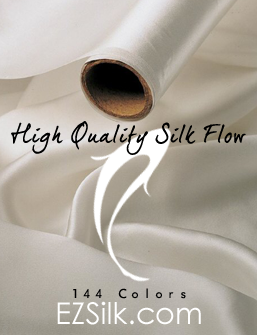Silk Related Fashion Tips
What is silk?
Just as pashmina can come in different forms and colors, so do
lovers of pashmina come with all kinds of preferences. Some
customers prefer pure pashmina, which is 100% pashmina, with no silk
blended in. Theres also 70% pashmina and 30% silk which is referred
to as pashmina wool. Some pashminas even have 50% pashmina and 50%
wool. Some customers prefer the pure pashmina, some find it too
rough or course. These varying kinds of pashmina have their own
advantages and disadvantages.
Usually, the best-selling ones arent even the pure kind, theyre made
of 70% wool and 30% silk. While, the true 100% pashmina is lighter,
softer and definitely more luxurious. This type is not as strong and
durable as the 70% pashmina and 30% silk blend. They also lack the
elegance, the sheen and the feel of the drape of the silk which
other people prefer.
Silk is filament fiber formed from silkworms, or the Bombyx mori.
These worms are not actually worms; they are caterpillars. For
thousands of years, humans have mastered the art and science of silk
production, which originated in China. Silk is highly valued for its
softness, its strength and its insulating properties. Silk is
expensive because it is a natural animal product, and producing silk
requires an intensive labor process that involves monitoring and
feeding the silkworms constantly. Quite a great deal of effort is
needed to produce just a small amount of thread.
The Chinese have managed to keep the secret of making silk for
centuries, which enabled them to export the rare textile to Europe
and dominate the trade routes. Over time, the silkworm eggs were
smuggled out. Western production of silk began in Italy in the 13th
century. Although the Western world was now involved in silk
production, this did not bring the cost down, as the amount of work
needed to make silk remained just about the same. It takes about
thirty thousand eggs to produce just 12 pounds of silk!
Once raw silk is produced, it can finally be wound into wheels and
spun in different type of thread, depending on the use. The crepe is
made using multiple strands of silk together in different
directions. The tram, on the other hand, uses just one to two
threads. Organzine is formed using multiple threads stranded in
different directions.
Silk aficionados are familiar with all forms of silk thread. Single
threads are used for sheer and fine fabrics while the crepe is used
for wrinkly and textured silks. Organzine is used for weaving warp
threads and the tram creates the filling, or whats called the weft.
Silk can also be used in knit garments.
Silk is dyed rather easily, and can be used in a variety of garments
such as sweaters, scarves and underwear. Even today, thousands of
years after the Chinese discovered the beauty of silk, many people
still clamor this fabric for its comfort, style and feel. Silk
should be taken cared of properly. Dry cleaning is usually best for
silk. Never soak, boil or bleach your silk garment. Also, if a silk
item should get wet, it should be rolled lightly in a towel. When
ironing silk, use a cool iron. This iron should be used more for
applying gentle pressure to ease out the creases rather than as
means to heat the textile.
Silk Fabric from EZSilk.com
Silk Fabric Types:
Silk Charmeuse 19mm, 16mm
Silk Chiffion 6mm, 8mm, 12mm
Silk CDC 16mm, 19mm
Silk Organza 6mm, 8mm, 12mm
Silk Habotai (China Silk) 6mm, 8mm
Silk Shantung 17mm, 19mm
Silk Dupioni 17mm, 34mm
Silk Twill 12mm, 14mm, 16mm
Silk Duchess Satin 35mm
Silk Cotton Voile 9mm
Silk Stretch Charmeuse 16mm, 19mm
Silk Blended Novelty Fabrics
-Silk Weight: mm (It's called Mommy)
